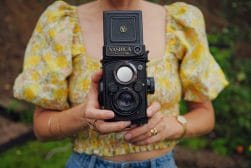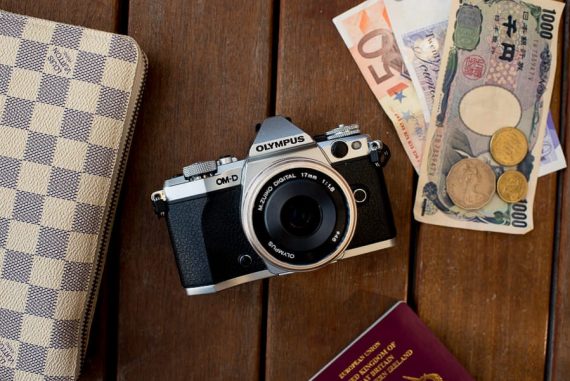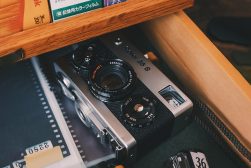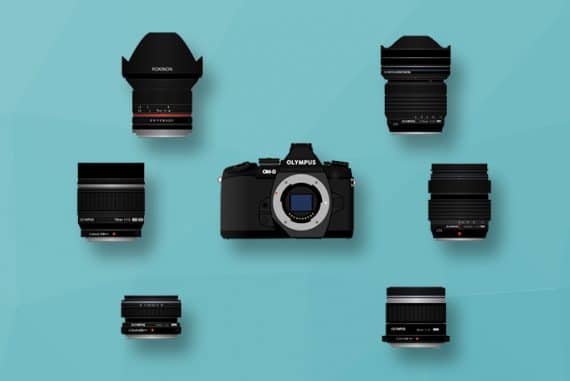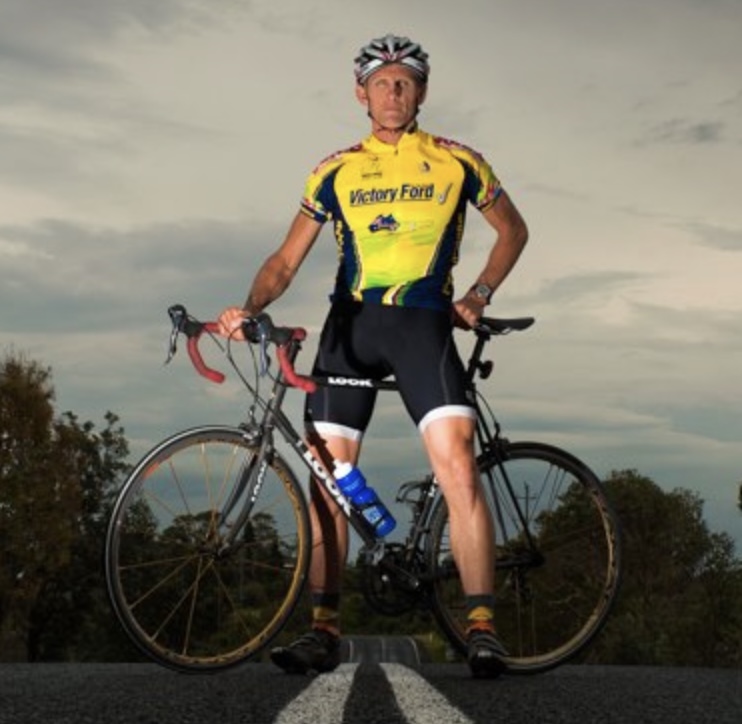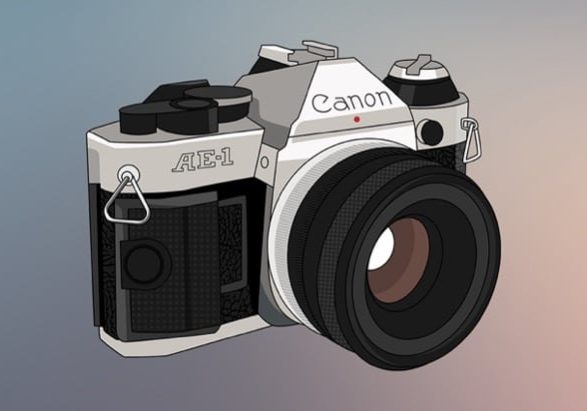
9 Top Picks for Cheap Film Cameras in 2023
Just getting into film photography and looking for a cheap (but awesome!) film camera? Take a look at our top 9 picks + what you need to know before buying.
If you’re looking for a cheap film camera, this guide will save you hours of research.
While there are still classic film cameras out there, it’s not always easy to find affordable ones in good condition.
Cheap film cameras need to work well, after all, especially for beginner film photographers with little prior experience.
Film photography is experiencing a revival, which means that the second-hand market is booming.
Online marketplaces like eBay tend to be more expensive than specialist second-hand camera sites like KEH, but they also tend to have more variety.
I’ve included links to all the cheap film cameras I found during my research below.
You should also check our guide to the best film cameras.
With a bit of luck and this guide under your belt, you can be shooting some good old analog photography soon.
Table of Contents
What is the Best Cheap Film Camera in 2023?
Pentax ME Super | Editor’s Pick For Film Photography on a Budget

- Compact
- User-friendly
- Good lens-mount system
- Good image quality
- Battery operated
The Pentax ME Super has everything you need to take photos on film.
It’s a real take-everywhere camera, as one of the most compact SLRs ever built.
It has a big, bright viewfinder, a more sensitive light meter, and an easier film-loading system than the K1000 (further down this guide).
Pentax ME Super is especially good for beginners and those who like to shoot aperture-priority. It’s easy to learn how to use it, and the layout means it’s quick to work with.
You can also shoot in full manual mode and bulb mode for long exposures.
The aperture is adjusted on the lens, and there’s a control on the camera for shutter speed.
You can see this through the viewfinder, and if you’re shooting in manual, you’ll be shown if the picture is over or under-exposed.
It uses the K-Mount bayonet system, which was the most popular one at the time and is compatible with Sigma, Ricoh, Tamron, plus other manufacturers’ lenses.
The only downside is that the ME Super relies on batteries to operate. If they die, you can only use two shutter speeds: 1/125 and bulb.
If you’re interested in picking one up, shop around. They sell for $5 to $20 on KEH but are quite a bit more expensive on eBay.
Praktica MTL3
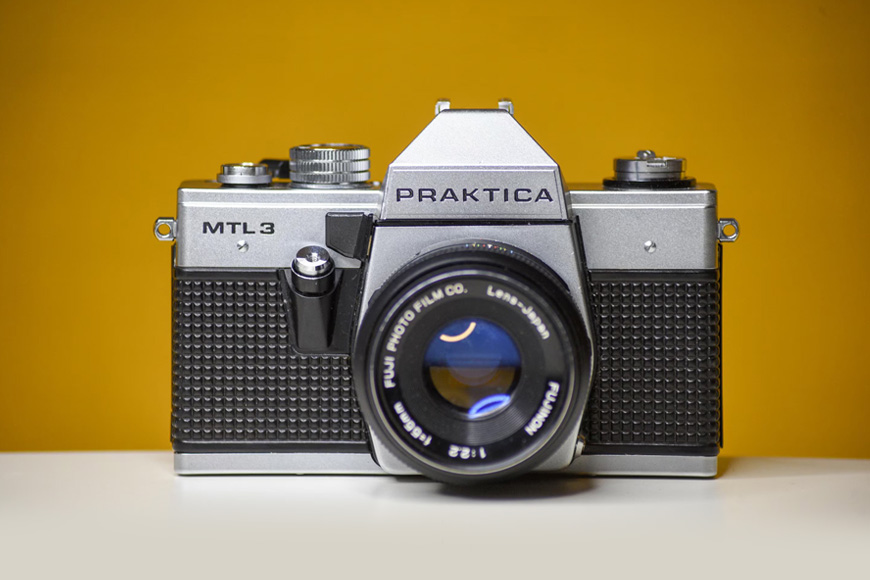
- Good value
- Versatile lens mount system
- Self-timer
- Great image quality
- Film can be a little hard to load
The Praktica MTL 3 is great quality for its low price.
It’s a great no-nonsense SLR with all the attributes you’d expect for beginners to advanced users to get the most out of it.
It uses the M42 lens mount, which is one of the most versatile out there.
Not only do you get the whole selection of M42, but there are also plenty of great options available at all price points from manufacturers.
These include Pentacon, Pentax, Chinon, CZJ, Meyer-Optik Gorlitz, Fujica, Mamiya, Tokina, Vivitar, plus many Soviet brands (such as Jupiter/Helios).
Thanks to the vast selection of lenses you can use with it, plus its overall build quality, the image quality it’s capable of producing is very high.
Like other Prakticas, it uses a Wheatstone Bridge circuit for the light meter. This circuit is designed specifically to meter accurately, no matter the supply voltage.
This is great, as batteries can cause a headache for folk wanting to use older cameras.
So, unlike some other cheap film cameras, which prefer the old 1.35v mercury battery voltage, a Praktica can happily use the 1.5v alkaline equivalent.
There is no need for a converter – just get the alkaline one and stick it in.
Pentax K1000

- Fully manual
- Sturdy design
- Threaded shutter release
- Reliable
- Beginner-friendly
- Its lens might not be the best
The Pentax K100 is often called the perfect beginner SLR camera for film.
It’s tried and true and was a very common camera used by high school and even university students back in the day.
And that’s because it’s so reliable and simple to use (once you understand the basics of exposure).
The Pentax K100 is a fully manual camera with no power switch or electronic parts. Except for the light meter, it can work without batteries.
If you do put batteries in it, you’ll get a handy needle in your viewfinder that will show you whether your image will be over or underexposed.
In terms of what you should look for with regards to price, they normally go for anything between $75 and $300. $50 would be a great price.
Make sure it has, or go buy, a Pentax 50mm. If it doesn’t come with that lens, try to bargain, as the off-brand lenses aren’t as good.
Canon AE-1

- Well-designed
- Reliable
- Widely available
- Good quality images
- Needs a battery to work
- Flimsy battery door
The Canon AE-1 was once the most popular SLR of all time, which means they’re still easy to find. It also means there are plenty of replacements or spare parts around should you need those.
However, they were famously reliable and well-built, so the likelihood is that you won’t!
The Canon AE-1 is easy to use, and great to learn on, with aperture and shutter priority modes, split centre prism manual focus, and a built-in light meter that shows you exposure through the light meter.
The standard kit lens is a 50mm f/1.8, and it’s excellent quality. But if you want to expand your range, the body is also compatible with tons of lenses.
As for the price, there are plenty to be found under $100 at KEH.
A couple of things you should be aware of though, if you do get one: watch out for the battery door, as they tend to break if you’re not careful; and the light seals usually need to be changed, but that’s easy to do yourself.
Nikon F80/N80

- Very cheap
- Great features
- Can be paired with great glass
- Well-designed
- None
The Nikon F80 (N80 in the USA) is a great option if you’re looking for something inexpensive that you can use with excellent lenses and that handles like a DSLR.
It is, after all, the basis of modern DSLRs in terms of design and layout, and was the best and last 35mm camera for serious amateur photographers before those amateurs went digital.
The Nikon F80 is packed with features, with continuous autofocus, a double exposure mode, three metering modes (spot, evaluative and center-weighted), burst mode, and a 1/8000th top shutter speed.
Except for its slow flash sync speed, it has all the features you’d ever need for great photography.
It is smaller, lighter, and less than one-half the price of the F100, whose features it appears to duplicate or even improve upon.
You can normally pick one of these Nikon film cameras up for around $30 for the body only.
Olympus PEN

- Widely available
- Easy and cheap to repair
- Affordable
- Interesting design
- No internal light meter
- Limited shutter speed range
The Olympus PEN series are super small and compact SLRs that can shoot 72 frames on a 36-exposure roll of film.
That can save you both money and time on developing and scanning, plus it can allow you to create interesting diptychs or collages by combining two half-frames into one image.
They have a decent range of interchangeable lenses and plenty of accessories and models to choose from, including the only SLR half-frame system, the Olympus Pen F (can get an adaptor too), which can flash sync at all shutter speeds, which is rare for an SLR.
Olympus PENs are also easy to service should they need repairing. So you should be able to find someone to do that relatively inexpensively.
You can find them for under $100 on KEH (make sure to click on the film version of the camera, as Olympus has a Micro Four-Thirds digital version under the same name) and for between $90 to $200 on eBay.
Minolta SRT-101
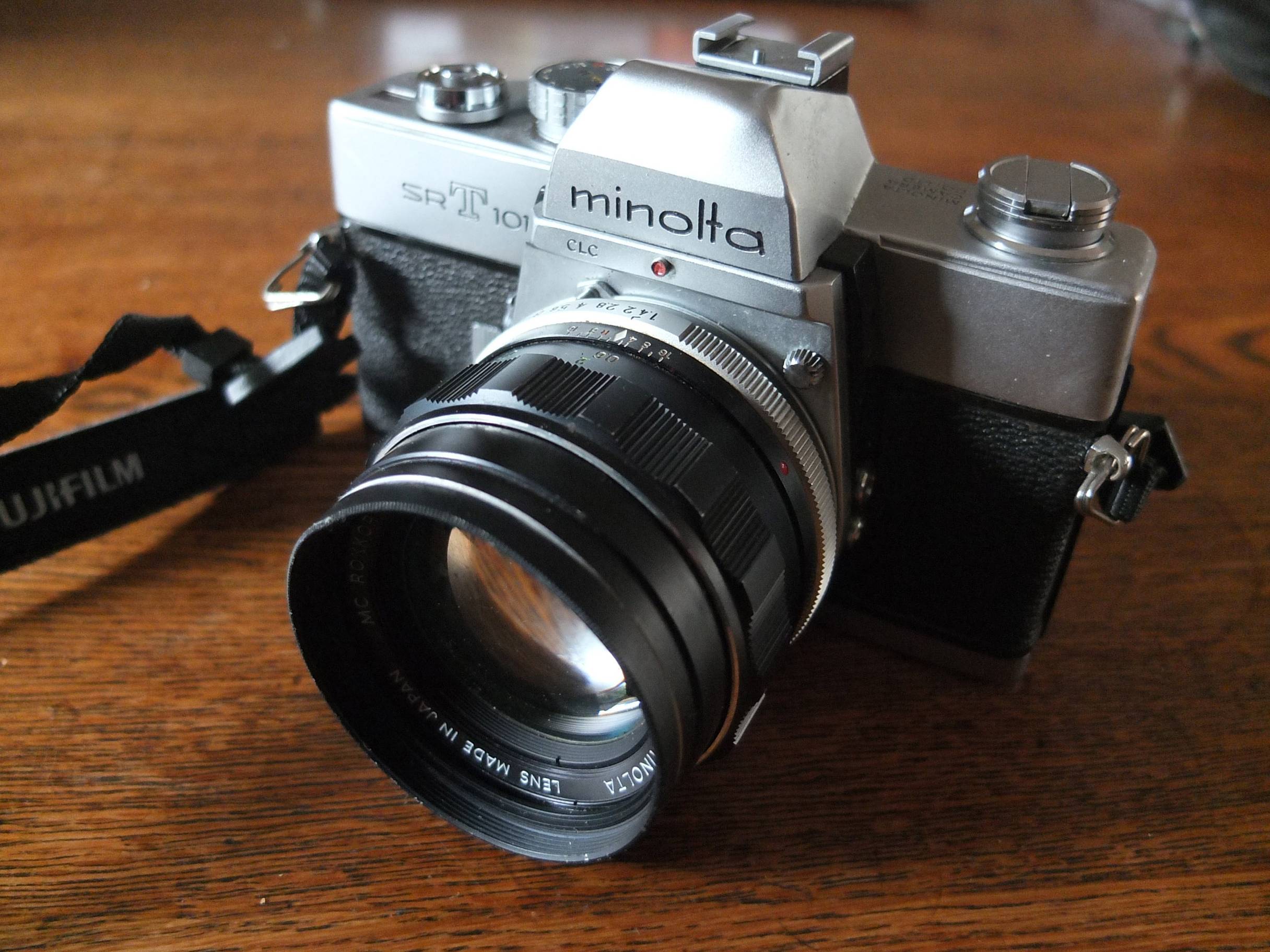
- Well-built
- Great lenses
- Affordable
- Good-looking
- Battery operated
The Minolta SRT series was the precursor to the Leica, and you might just be able to cure your Leica-lust with it.
It’s a beautiful camera, a bit heavier than the Olympus OM-1, but usually cheaper.
They’re well-built and reliable and easier to work with than smaller cameras like the Olympus OM-1, as there’s more to hold on to.
It’s battery-operated, and that’s what drives the matching needle light meter. Just get those needles aligned, and your exposure is correct.
They are also easy to permanently convert to 1.5v batteries.
The Minolta SRT uses an MC lens mount, and you can adapt a lot of third-party lenses to work with this, but the Minolta lenses from this period are really great.
If you get the chance, pick up the 135mm 2.8 that goes with this camera (it’s one of the best that Minolta made) or the 58mm f/1.4.
The Minolta SRT-101 is cheap, too, and can be picked up for $15 to $30 on KEH.
Olympus OM-1
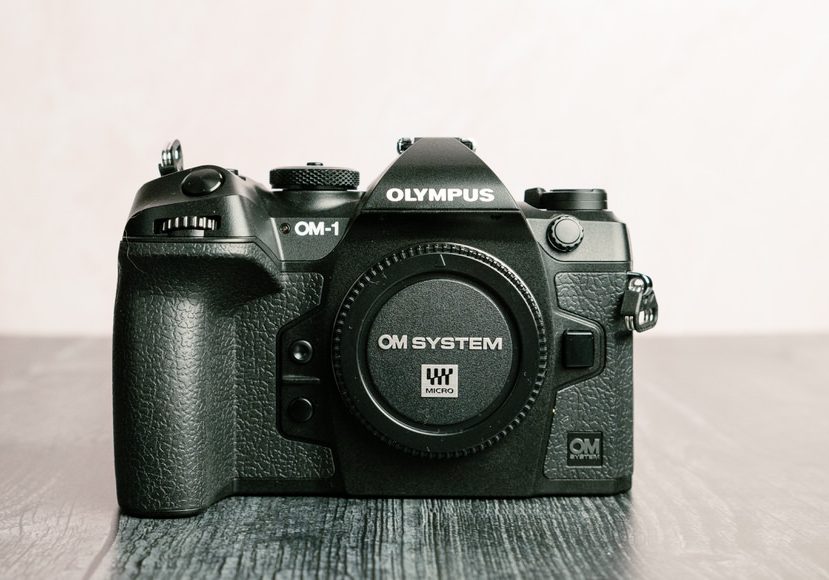
Credit: Steve Vansak
- Great optical quality
- Well-designed
- Ergonomic
- Excellent viewfinder
- Discontinued battery type
- Steep learning curve
Some believe that the OM-1 is one of the best SLRs ever designed.
It was the brainchild of Yoshihisa Maitani, the man who designed the brilliant PEN F half-frame camera line previously and meant to directly compete with Leica.
It’s reliable, has excellent optics, and solid build quality.
It’s much more compact than many of the SLRs of the time, and it’s also a lot more ergonomic.
With its OM mount, there’s a great selection of lenses you can use with it.
The kit lens it came with was the Zuiko 50mm f/1.8, and it would be difficult to find a better quality manual focus lens. It’s fast, sharp and smooth.
There’s also a handy preview button on the kit lens that allows you to see depth of field before taking a shot.
The viewfinder is one of the largest and brightest you’ll find, and it’s a joy to use with its split prism focus and exposure meter.
However, it’s not made for beginners. It’s an all-manual camera, so you will need to learn how to use its various controls and buttons in order to get the most out of it.
Make sure to check if the internal light meter is working or not, as it took a battery that has been discontinued.
If you have a local camera repair shop, the OM-1’s partially mechanical, partly electronic meter can be recalibrated to use a modern 1.5v battery by someone who knows what they’re doing.
It’s also possible to adapt it to work with hearing aid batteries.
Whatever you do, it’s worth checking the metering with a light meter or phone app, just in case.
Olympus OM-1s sell for $70 to $130 on KEH and $60 and up on eBay.
Konica Autoreflex
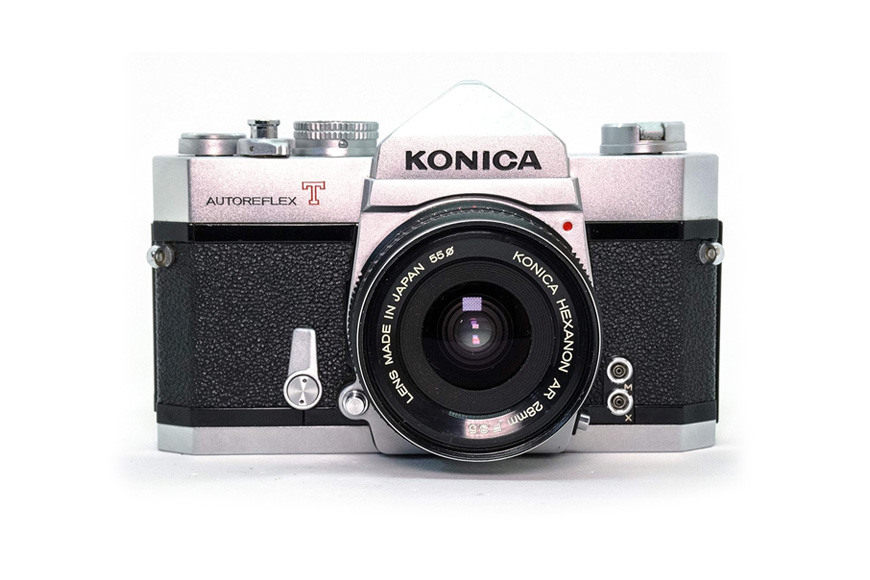
- Great, sharp images
- Lightweight
- Durable
- User-friendly
- Discontinued batteries
The Konica Autoreflex is an inexpensive yet solid performer.
It’s a good quality machine with a lightweight but strong metal body, and it’s very easy to use.
The Autoreflex is a fully mechanical camera except for the light meter, which unfortunately relies on discontinued 1.35v batteries.
Without adapting this to 1.5v or hearing aid batteries, you won’t be able to use the light meter.
It has a built-in multiple exposure setting, a flash sync of 1/125, and a shutter priority setting.
The image quality is great, and the Hexanon lenses you can use with it are incredibly sharp, and you can find them for a decent price.
What Is the Best Cheap Point and Shoot Film Camera?
There are plenty of good, cheap point-and-shoot film cameras out there, and here are some of the best ones:
- Canon Sureshot 130u
- Canon Sureshot 80u
- Olympus Infinity I
- Pentax PC700
- Olympus Trip XB400
- Canon Sureshot Supreme
- Nikon Litetouch AF Zoom
- Olympus Mju
- Nikon L35AF
- Konica Big Mini F
What to Consider When Buying a Cheap Film Camera
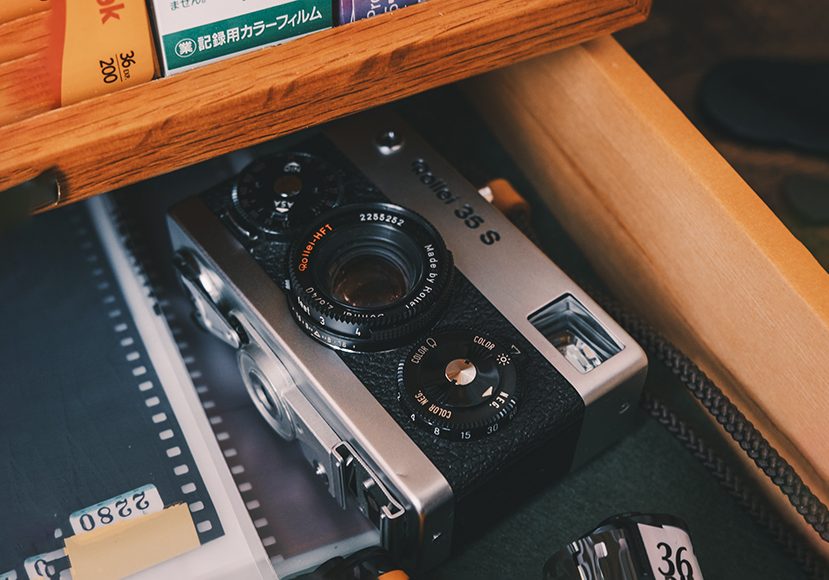
If you’re buying one of these film cameras, you need to make sure of a few things.
Even though you’re not spending much money, you don’t want to waste it.
Condition
Check that it’s free of light leaks and that the shutter timing is accurate. Inspect it inside and out for dings, scratches, and any areas of looseness.
Are there any things that look like they are wearing out or need to be replaced already, such as the light seals, light meter, batteries, or battery cover?
Lens
Check the condition of the lens and also consider if it’s the right lens for you.
Think about the lens mount. What other lenses are compatible with this system, and how widely available are they?
Warranty
Does it come with a warranty? A camera that has been serviced or comes with a warranty will cost you more, but you will have more confidence in its longevity.
Mechanical vs Electronic
Does the camera need a battery to work? Many old cameras are purely mechanical and don’t, but many of them do.
If the battery runs out, your camera’s functionality will be severely limited.
You also need to check what kind of battery it takes. Some old batteries are no longer in production, which means you might need to get the battery compartment converted or recalibrate the light meter.
Vintage vs Modern
Vintage cameras are cool, but they’re harder to repair and find replacement parts for.
Modern cameras are less cool but easier to maintain.
What Are the Different Types of Film Cameras, and Which One Should I Buy?
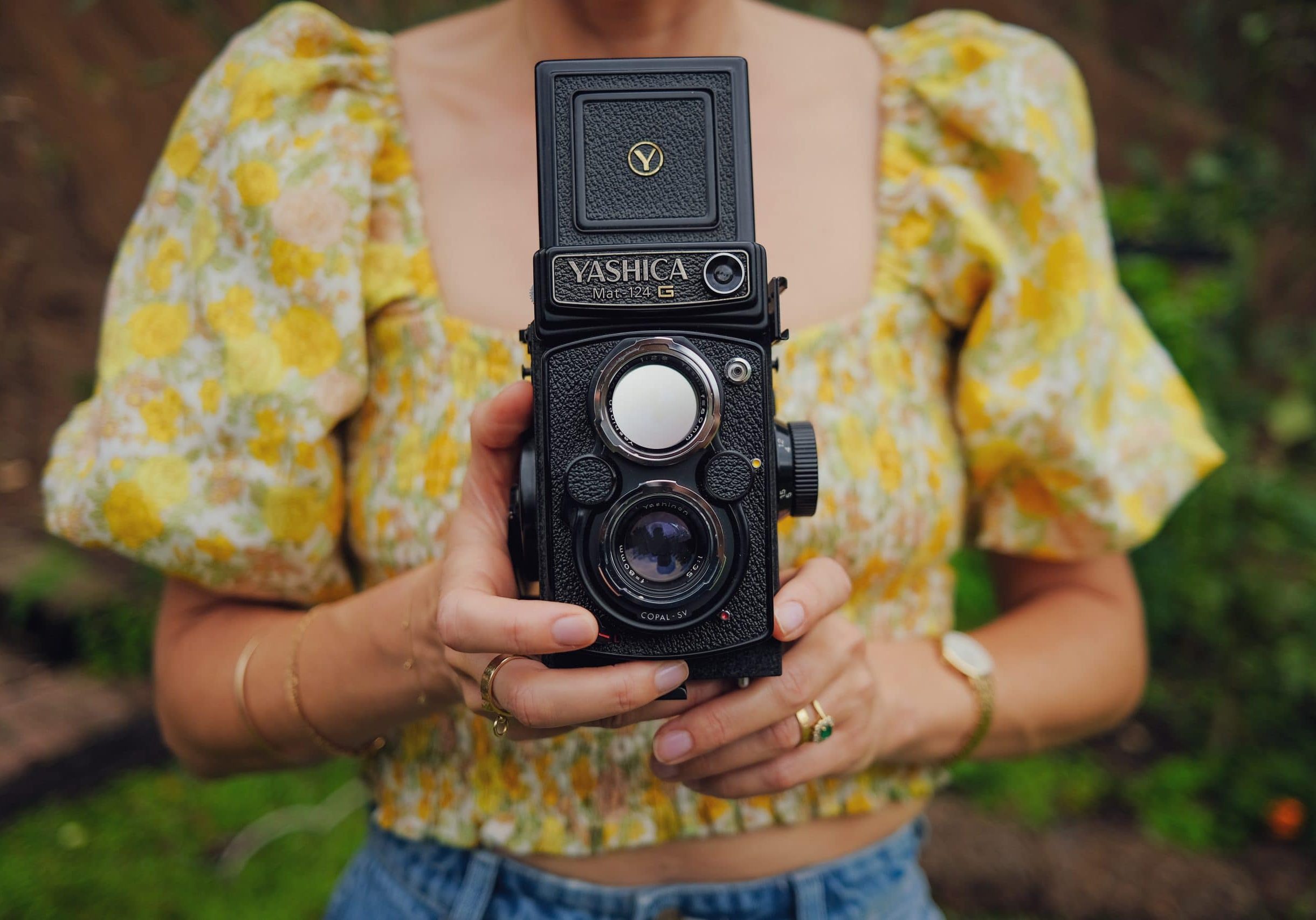
There are many different kinds of film cameras, but here we’ll just focus on the three main types you are most likely to buy and which of them you might want to choose.
SLR
An SLR is a “single-lens reflex” camera that uses an internal mirror to allow you to look through the lens.
That means you’ll get a pretty good idea (if not an exact indication) of what your final image will look like.
SLR cameras are popular and readily available, and there are a wide variety of lenses out there.
You can either use them as a complete beginner or a more advanced photographer, as most of them give you the option to control shutter speed, aperture, and exposure compensation.
You’ll also have access to a wide range of 35 mm colour and black and white films.
If you want “higher resolution” images, another popular type of SLR camera is the kind that takes medium format film.
Rangefinder
These cameras use a separate window, called a rangefinder, to view and focus on your subject.
Unlike an SLR, you are not looking through the lens. So, as you’re not looking through the same lens as the one that will take the picture, the image you see won’t be exactly the same as what the lens will capture.
So, if you like that retro feel, and enjoy having a slightly mysterious, surprising output, then these are the cameras for you.
Also, rangefinders tend to be more compact than SLRs, so they are easier to carry around and more discreet.
Point and shoot
Point-and-shoot cameras, or compact cameras, do exactly as their name suggests.
You point them and shoot them, and there’s nothing else (or little else you need to do). You have either no or very little control over the setting and image exposure.
They are the easiest cameras to use and, therefore, great for absolute beginners.
What Features Do Expensive Film Cameras Have That Cheap Ones Don’t?
That depends. Sometimes the answer is nothing.
As film photography has become more fashionable, some cameras have become extremely sought-after and expensive just because, for example, celebrities have been seen using them.
But, for the non-hyped cameras, the answer is sometimes the same: nothing.
It might be a case of rarity. Rare cameras become more expensive over time as the supply goes down and the demand goes up, especially with famous brands like Leica or Hasselblad.
Cameras may become well-known for having amazing kit lenses.
One definite reason, though, or feature that leads to film cameras being more expensive is if they are medium format cameras.
You have way more latitude with medium-format film and can make bigger prints.
FAQs
What is a good price for a film camera?
Film cameras can range massively in price.
Some are undervalued, and some have become overhyped, overpriced cult products.
A good price is the one you can afford for the camera you think will give you the experience you want.
Is a film camera still worth it?
Yes.
If you love photography, in my opinion, you should at least sometimes shoot film.
Film photography forces you to slow down and think about your composition and settings.
What film photography teaches you is invaluable when you, for example, shoot digital.
And, as you can see from this guide, there are many affordable film cameras out there.
So, it’s worth it theoretically and financially.
Do images look any different when shooting the same film with two different cameras?
Yes, they do.
Each camera is different, the lenses are different, and it’s a whole different experience.
Although film stocks have unique and consistent looks, the camera you use will also have a say in what the final image looks like.






